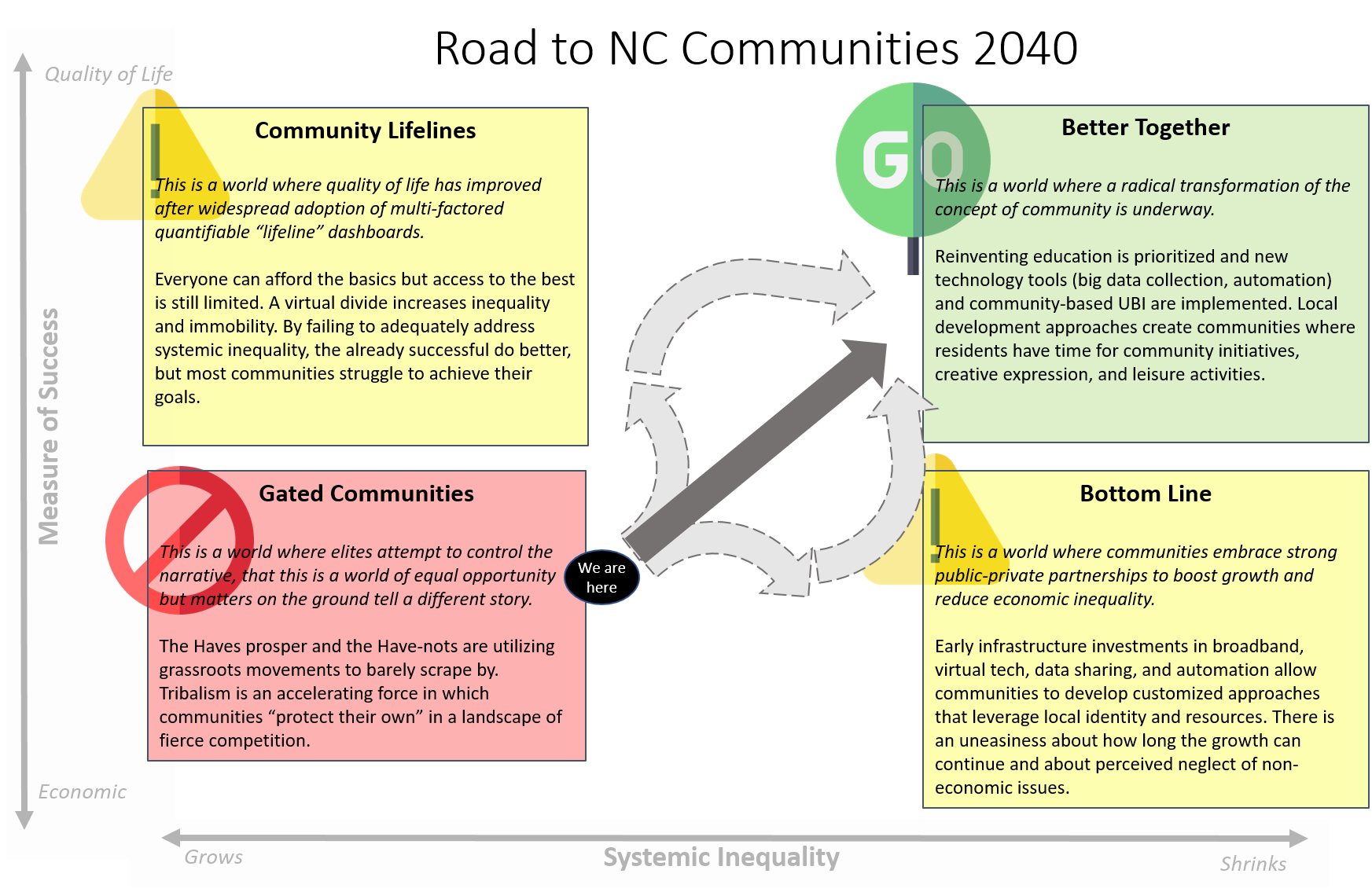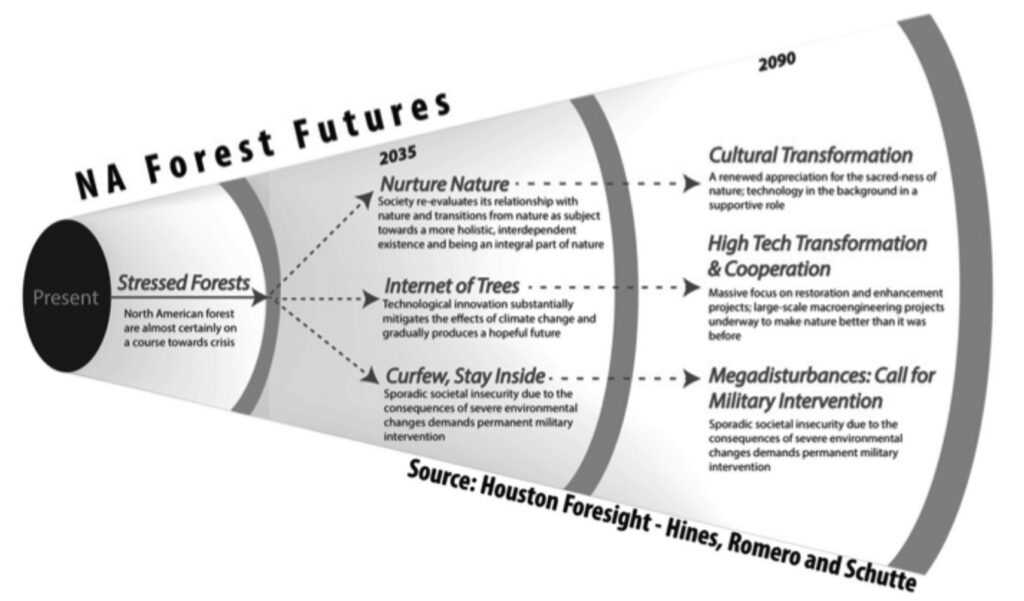Our students & faculty work with some of the most forward thinking companies, groups, and organizations.
Is your organization interested in working with our futurists?
We need to chat: foresight@uh.edu
For Our Patrons: Research & Training Projects
The Houston Foresight Program offers custom research projects using faculty, alumni, and students. We place a tremendous value on learning-by-doing and you get the benefit of unique student perspectives coupled with seasoned pros leading the project.
Research projects are run through the University of Houston Research Office. They typically involve from 3 to 5 students – sometimes as many as a dozen – overseen by alums, faculty and under the direction of the Program Coordinator, Dr. Andy Hines and Research Director Nicci Obert. The timing is flexible — ranging from a semester to six months to a year! This is a good option when you want a wide range of perspectives and inputs. and/or want support and do something nice for the Foresight program. We appreciate it and it helps build the profession! The ideal project here is one without severe time or deadline pressure (these take a few months to set up); ideally one of those projects you’ve always wanted to do but haven’t had the time or people to do it.
Research Projects
Future of Libraries
Client: The Seattle Public Library
Read the full report: The Future of Libraries
The Seattle Public Library (SPL) asked Houston Foresight to use scenario planning to help explore the future of libraries into 2032. The purpose of developing this long-term view was to identify and build support in the present towards a preferred future, as a compelling, plausible, and positive view of the future can inspire and motivate action in the present. At the same time, the potential for less desirable or negative futures was explored as well.
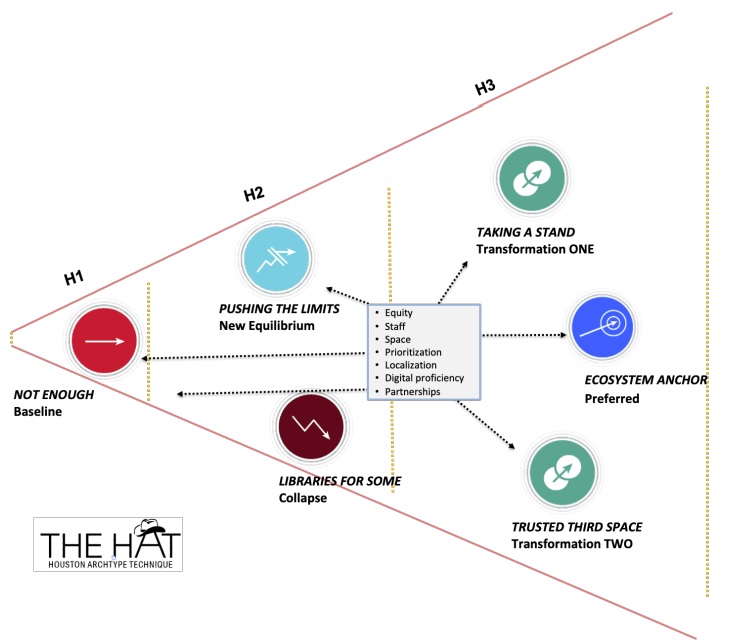
The project used Houston Foresight’s Framework Foresight method and Houston Archetype Technique (HAT) for exploring the future, along with a series of exploratory scenario and implications workshops to engage the SPL community in the process. A scenario landscape of six potential futures was developed in order to identify strategic issues, options for responding to them, and to suggest an integrated strategic approach to the future.
The findings that emerge tell a story of a future that is characterized by both promise and peril. Promise is perhaps most succinctly captured in what futurists refer to as a “preferred future.” Mindful of the research and analysis, the preferred future brings in the additional element of what the team would like to see happen. Indeed, the Ecosystem Anchor scenario describes a preferred future in which the Library is a hub at the center of the community and connecting its patrons to tailored information services, community partner services, and other impactful Library services that help make Seattle a thriving city. Peril is perhaps most acutely captured in what futurists call a “collapsed future.” How might the future turn out badly? The team at SPL needs to understand how this could happen so it can actively work against it or avoid that scenario. The other scenarios contain a mix of promise and peril. Each scenario will tend to present some unique challenges. The team identified two dozen potential strategic issues that include a mix of opportunities and threats. At the same time, the team was able to identify seven themes of change that seemed to be present no matter which scenario unfolded.
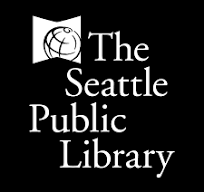
Key Project Stats
Collected more than 200 scanning hits
Interviewed and surveyed 150 Seattle Public Library members, community leaders, and external experts to develop key inputs for the scenario workshops
Identified 14 Drivers of Change shaping the future of libraries
Built 6 Scenarios using the Houston Archetype Technique (HAT)
Developed the “Super Seven” seven themes of change that seemed to be present no matter which scenario unfolded
Future of Environmental, Social, and Governance Criteria
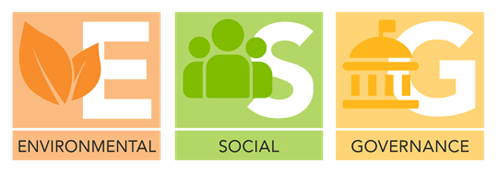
Key Project Stats
Collected nearly 200 scanning hits
Interviewed 20 stakeholders to help us frame the Trends and Drivers used to create the scenarios
Identified 8 Drivers of Change shaping the future of ESG
Built 4 Scenarios using the 2×2 uncertainty technique
Defined 25 Issues important to the future of ESG
Client: Anonymous Client
Read the full report: Understanding the Implications of Environmental, Social, and Governance Criteria on Capital Projects
The client asked Houston Foresight to use scenario planning to help explore the future of environmental, social, and governance (ESG) criteria on capital projects into 2030. The purpose of developing this long-term view was to identify and build support in the present towards a desirable future, as a compelling and positive view of the future can inspire and motivate action in the present. At the same time, the potential for less desirable or negative futures was explored as well.
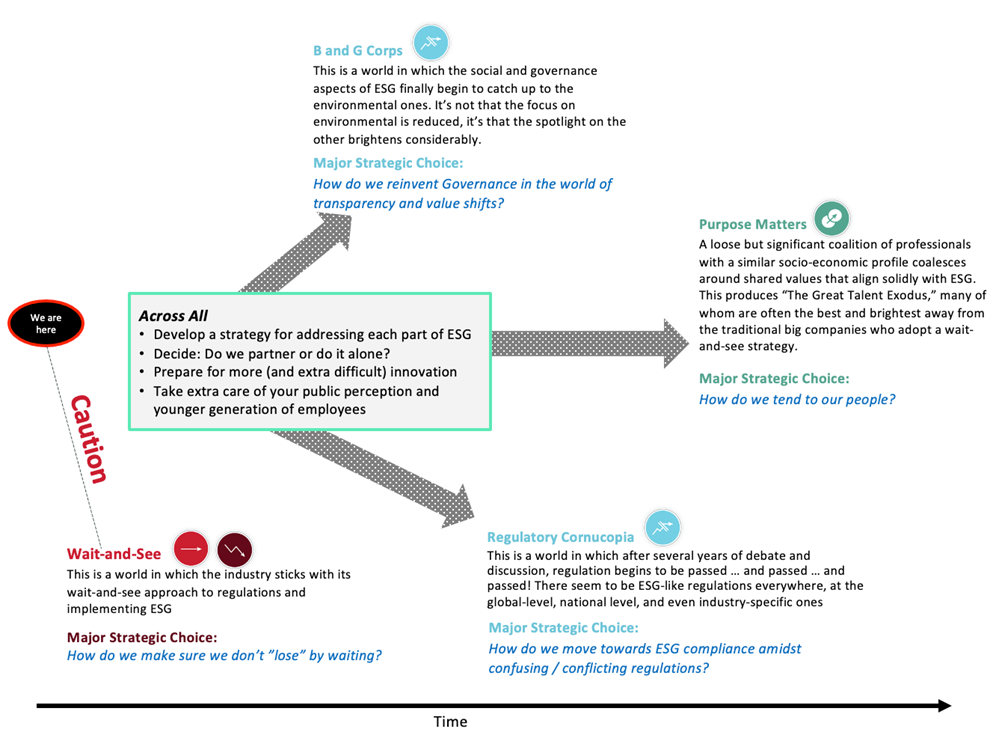
The project used Houston Foresight’s Framework Foresight method for exploring the future, along with a series of exploratory scenario and implications workshops to engage THE CLIENT members around the process. A scenario landscape of four potential futures was developed in order to identify strategic issues, options for responding to them, and begin to build an integrated strategic approach to the future.
Future of Communities in North Carolina 2040
Client: Civic Federal Credit Union (CFCU)
Read the full report: Future of Communities in North Carolina 2040
Houston Foresight was asked by a (then current) student working in North Carolina at the CFCU to help them explore the future of communities in North Carolina. Although the scope was North Carolina, we searched nationally and globally for future of community signals. This was a fun challenge as we are typically tasked to explore more concrete topics. We had to start by defining community. “A community is a group of people in the same place or those who have a shared identity from common needs, desires, or beliefs.”
We used a 2×2 Systems Scenario technique to form the scenarios. The systems technique is an inductive approach to scenarios that utilizes systems thinking in making connections and thinking through influences. These were framed by our two most important uncertainties: Measure of Success and Systemic Inequality.
One of our key takeaways was the importance and volatility of social tribalism – Will heightened social and political tribalism conflicts persist, or will a new generation turn towards harmony and pragmatic compromise by 2040?
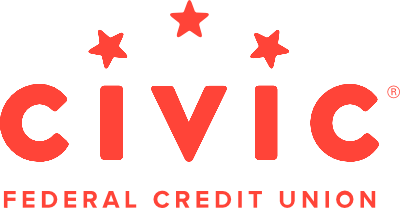
Key Project Stats
Collected more than 330 scanning hits
Interviewed 32 Civic FCU members, community leaders, and external experts to develop key inputs for the scenario workshops
Identified 13 Drivers of Change shaping the future of communities
Built 4 Scenarios using a hybrid deductive/inductive scenario formation method
Developed a Taxonomy of 28 Community Development Models that align with the 3 most likely futures scenarios
Future of Veterinary Assessment

Key Project Stats
Collected nearly 200 scanning hits across specialized outlets and industry sites
Interviewed the ICVA board and 14 stakeholders to help us frame the Trends and Drivers used to create the scenarios
Identified 6 Drivers of Change shaping the future of veterinary assessment
Built 4 Scenarios using the 2×2 uncertainty technique
Defined 25 Issues important to the future of veterinary assessment and developed strategic options for responding to the top issues per scenario
Client: International Council for Veterinary Assessment (ICVA)
Karen Rosenthal and Donna Harris are prominent volunteers of ICVA and alumni of the Houston Foresight program. Karen and Donna, along with the Board of Directors and CEO of ICVA, Heather Case, came to us with a question:
What will the role of assessments in the veterinary profession be in the next 10 years… and what can we do to position ourselves for success?
The results broadly suggested changes ICVA tests should make that will be compatible with the world of technology, changing values, changing professional targets, and to develop “tests” that provide a more holistic portrait of the candidate’s readiness.
Side note: the CEO of ICVA, Heather Case, enjoyed the process so much, she joined us later in 2021 for a foresight certificate course!
The Houston Foresight team consisted of Andy Hines, assisted by Project lead Tim Morgan and Laura Schlehuber, alum April Koury, and four graduate students: Bes Baldwin, Brent Hughes Miranda Mantey, and Tom Rau.
Future of Cat Care & Future of Food Joy
Client: Clorox
In 2019 and 2020, Houston Foresight worked with Clorox on partial foresight projects focused on “domaining” as a new innovation process to identify opportunity areas for Clorox’s products. These projects with Clorox focused on coming to a set of Drivers – although we added vignettes (mini-scenarios) to show some plausible outcomes of the drivers.
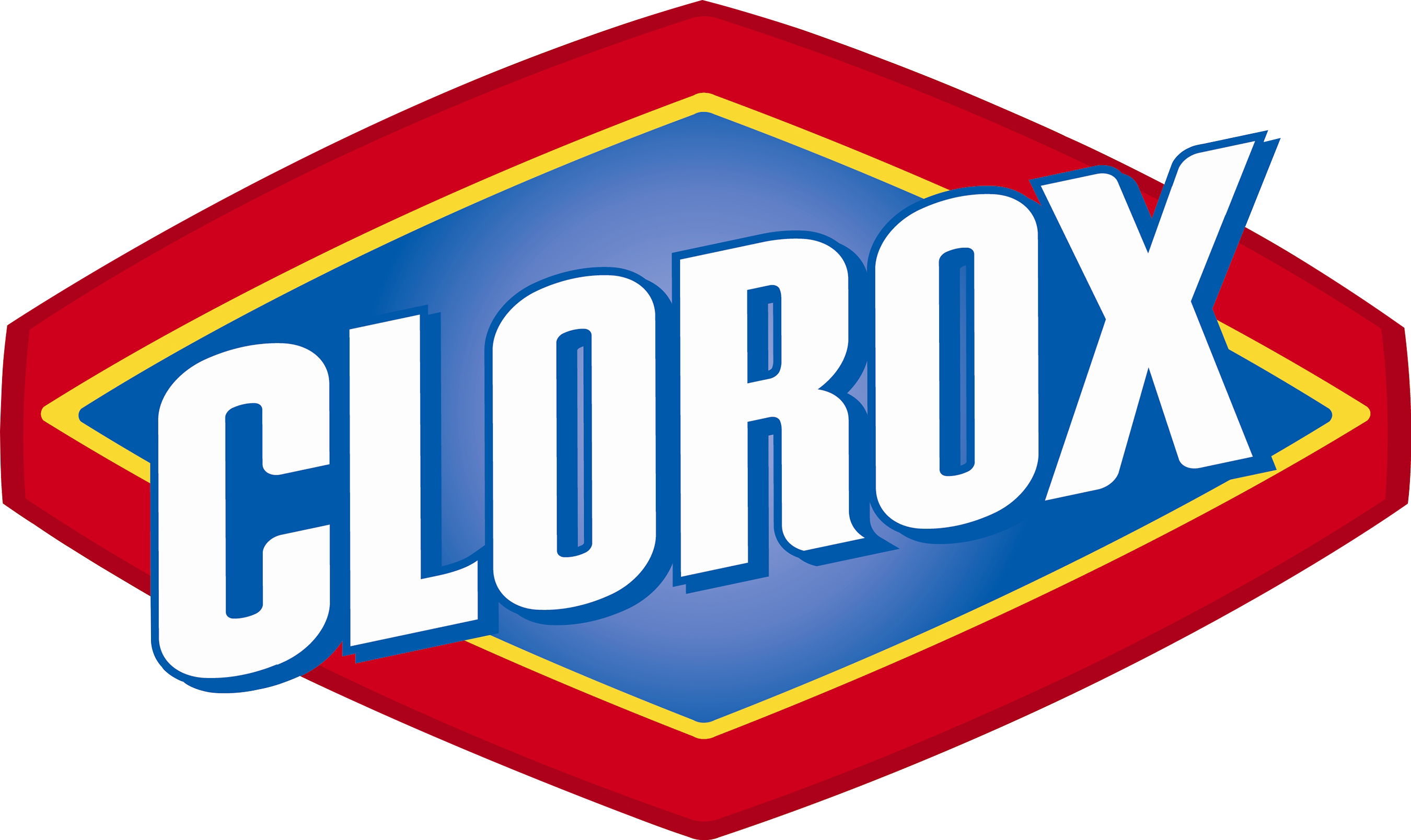
Future of Cat Care
Our first project of this kind was with Clorox’s kitty litter products. To our surprise and delight, this has been one of Houston Foresight’s favorite research endeavors! The details are proprietary, but the 6 Cat Care driver names follow:
- CopyCat
- WellCat
- Tech Pet
- Cat-Centric Design
- Sustainable Cat Care
- Animal Ethics
The Houston Foresight consisted of Andy Hines as Principal Investigator, Laura Schlehuber as Project Leader and the following students: Karen Rosenthal, Natalie Pacheco, Seth Harrell, Aliesa Stover, and Nina Frankowski.

Future of Food Joy
Next we were able to work with Hidden Valley Ranch – one of the most joyous bottles of flavor in the history of food! We applied the same process we did for Cat Care but here we will share the titles of the vignettes (which followed the scenario archetype approach):
- Continuation: More is More (& Less is a Bore)
- Collapse: The COVID Collapse: Food Security
- New Equilibrium: Back to Simplicity
- Transformation: Indulgence, Have it Your Way
The Houston Foresight consisted of Andy Hines as Principal Investigator, Laura Schlehuber as Project Leader, alum April Koury, and the following students: Seth Harrell, Aliesa Stover, and Nina Frankowski.

Future Service Opportunities for the Circular Economy

Key Project Stats
Gathered over 200 scanning hits
Developed and organized 14 Drivers of Change into 3 buckets:
- Aspirational drivers that pull us into the future
- Momentum drivers of today that will be a part of the future
- Inertia drivers that reflect the weight of history
Built 4 Scenarios using the scenario archetype approach
Identified 130 Key Implications and 30 Potential Strategic Issues
Client: Kimberly-Clark
How does a company talk to its consumers about the circular economy (a system aimed at eliminating waste and the continual re-use of resources)? What service models might appeal to them? To answer these questions, the Houston Foresight team developed scenarios suggesting different ways that the circular economy might unfold over the next 10 years.
The Houston Foresight team consisted of Andy Hines, Maria Romero, Kimberly Daniels, Donna Harris, Hannah Kim, Natalie Pacheco, Karen Rosenthal.
Student Needs 2025 & Beyond
Client: Lumina Foundation
Read the full report: Student Needs 2025 and Beyond
Thanks to the generous sponsor of Kiki Suarez and the Lumina Foundation, this was our first research project we kicked off in 2014. We explored the future of Student Needs 2025 and Beyond for Lumina Foundation, a leading higher education foundation with a goal of raising higher educational attainment levels from 40% today to 60% in 2025. We were tasked with providing Lumina a view of how student needs are evolving over the next dozen or so years. Put simply, could changes in student needs alter the equation of what higher education will need to provide by 2025 and beyond?
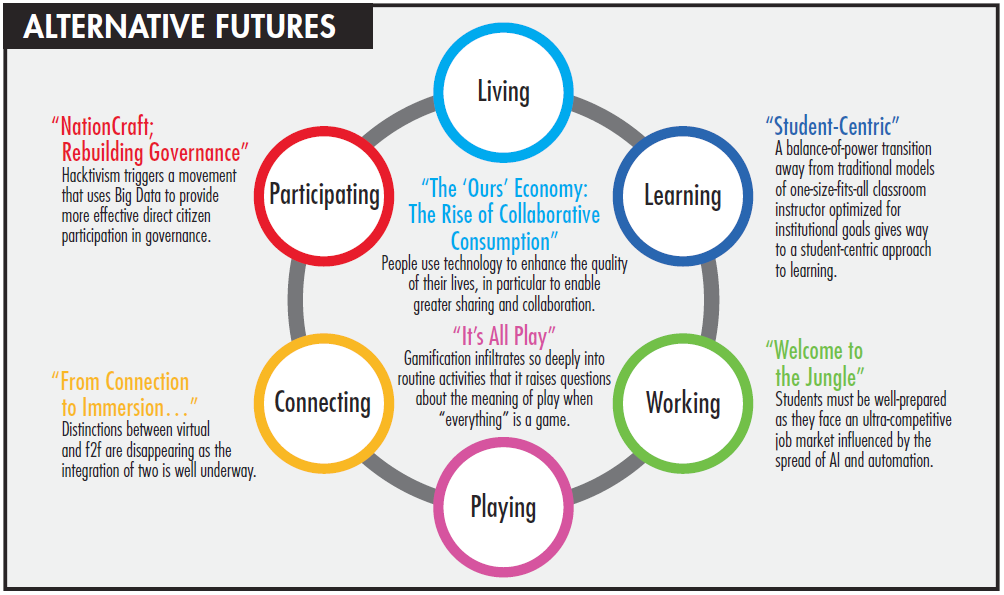
To do this, we assembled a team of two dozen faculty, alums, and students organized around six teams exploring what were considered evolving student needs related to Living, Learning, Working, Playing, Connecting, and Participating. We used Houston’s Framework Foresight process to produce forecasts of student needs and identify the implications and issues they suggest for higher education.
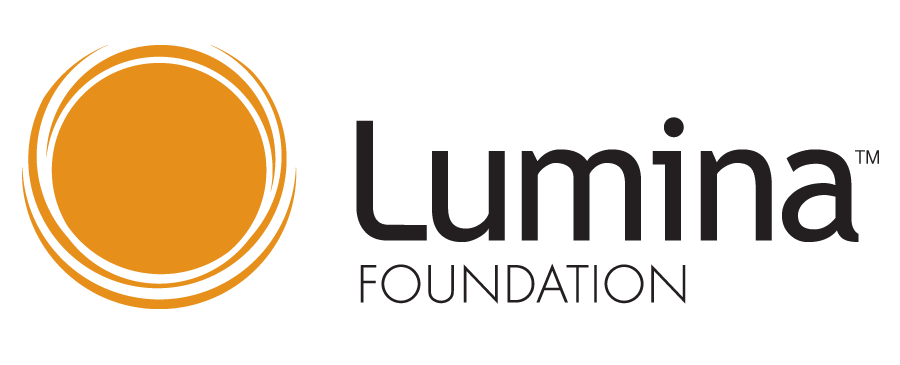
Key Project Stats
Assembled a team of two dozen faculty, alums, and students
Crafted 6 Baseline Futures and 6 Alternative Futures around the domains of
- Living
- Learning
- Working
- Playing
- Connecting
- Participating
Identified over 300 Student Needs to uncover 9 Emerging Student Needs in the Future of Higher Education
The Changing Demand for Higher Education
Key Project Stats
Collected over 140 scanning hits
Conducted 20 interviews with a mix of stakeholders and workshop participants
Identified 12 Drivers of Change
Developed 4 Future Scenarios depicting the changing demand for higher education
Discovered
- 65 Key Implications
- 42 Strategic Issues
- 9 Strategic Options
Recommended rollout in 3 phases
Client: Anonymous University
A higher-education Task Force asked Houston Foresight to use scenario planning to help anticipate and prepare for the changing demand for higher education over the next decade. A scenario landscape of four potential futures of higher education was developed to provide context for setting strategic direction and priorities in the present. The scenarios were analyzed to identify potentially disruptive strategic issues, options for responding to them, an integrated strategic approach to the potential futures, and a set of guiding recommendations.
The Future of Work 2050
Client: NASA Langley Research Center
Read the Executive Summary The Future of Work 2050 and download the white paper.
NASA’s Langley Research Center (LaRC) needed to test its current planning activities against a longer-term view of the external future. To do this, NaRC asked the Houston Foresight program to collaborate on the development of a set of longer-term external scenarios on the future of work. The goal was to stretch thinking out to the world of work in 2050 and then “bring it back” to a strategic approach and initiatives that could be started in the present.
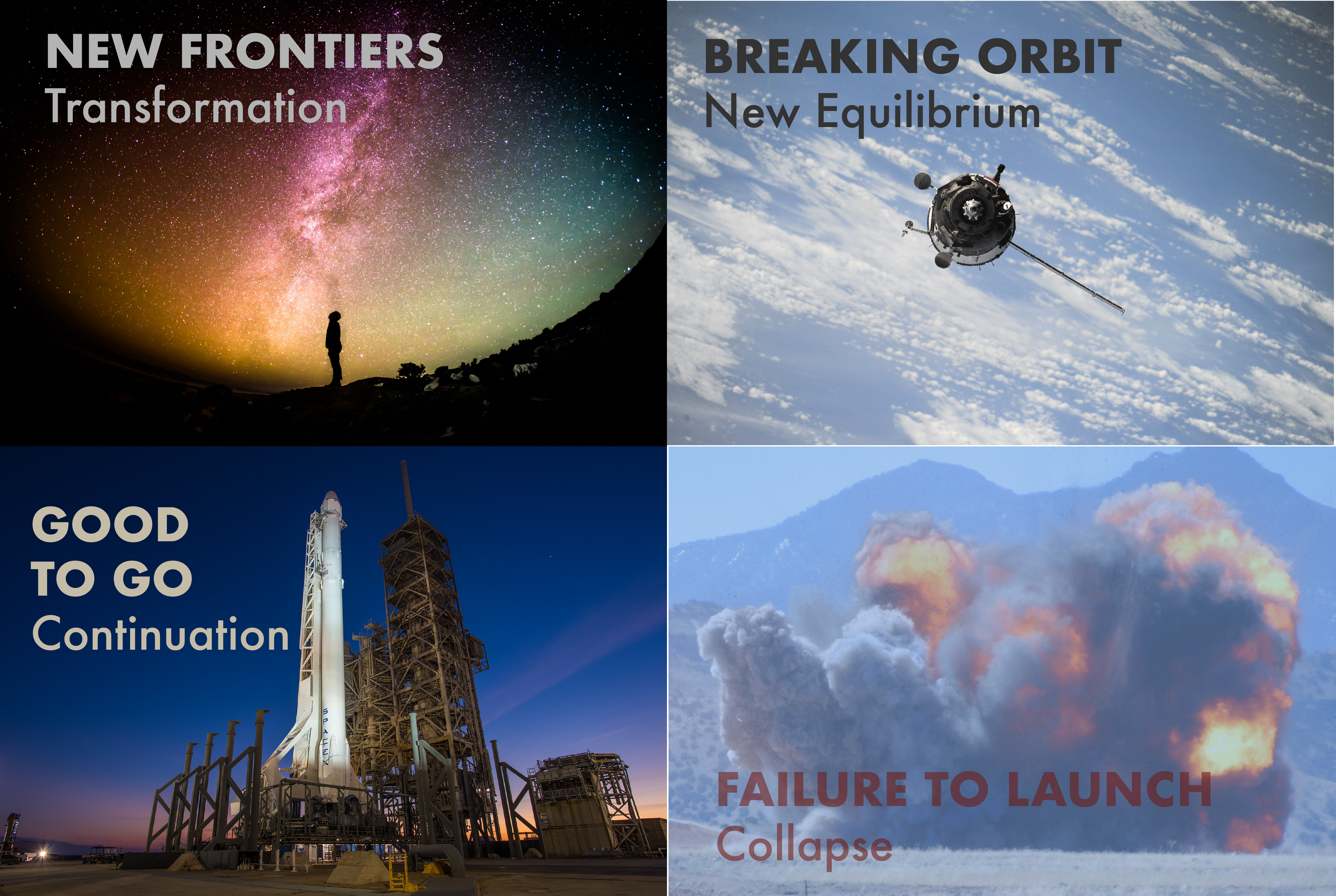
The project used scenario planning to create long-term views of the future of work. The scenarios will be used to “wind tunnel” the current plans and activities of NASA and enable them to make the appropriate adjustments to their current strategy.
The Houston Foresight team consisted of Andy Hines (PI), alum Maria Romero (Project Manager), and students Tim Morgan, George Paap, and Mathew Palubicki.
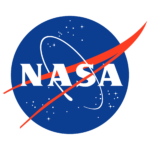
Key Project Stats
Identified 200 scanning hits
Discovered 19 Archetype Drivers of Change
Built 4 Scenarios using a scenario archetype approach
Developed Six Key Areas on which to potentially focus strategic initiatives
Future Context of Government Entity X
Key Project Stats
Discovered 150 scanning hits with top tags in Technologies, Security, and Workforce
Identified 10 Drivers of Change
Built 4 Scenarios using a deductive approach with Politics and Technology as the axes
Developed 10 Strategic Questions based on the Drivers and Scenarios explored in workshop
Client: Government Entity in the Middle East
The focus of the project was to explore how the future context might be different and identify strategic questions that were important to the client’s future.
To do this, the client requested that Houston Foresight use horizon scanning and scenario planning to provide input for developing its future strategy. This project drew upon Houston Foresight’s core approach called Framework Foresight as well as the popular GBN 2×2 scenario planning approach. The research support was provided by a team of two Houston Foresight faculty and four graduate students.
Technology in Baby and Childcare Products to 2030
The five-month study focused on consumer attitudes, highlighting parents and the growing subcategory known as “baby tech.” The findings offer specifically long-term strategic insights with respect to the use of technology in products for babies and young children. The foresight methodologies used included Horizon Scanning, Three Horizons, and Causal Layered Analysis as well as pieces of Houston Foresight’s Framework Foresight approach.
The Houston Foresight team consisted of Andy Hines (PI), faculty Alex Whittington (Project Manager), and students Tim Morgan, Justin Ochs, Cindi Stuebner, and Mathew Palubicki.
Key Project Stats
Discovered 250 scanning hits with top tags in Technologies, Products, and Attitudes
Identified more than:
- 150 Trends
- 15 Needs
- 15 Situations
- 20 Technologies
Uncovered 10 Emerging Issues that were explored using CLA
Recommended rollout in 3 phases
Future of the US Forest Service
Client: US Forest Service
We have been working with the US Forest Service on setting up a Horizon Scanning system. You can check out blog posts highlight key scan hits on our blog. We also just produced our first collaborative Forest Futures newsletter, an article about Transitional Scenarios we developed for this project, and an accompanying blog.

